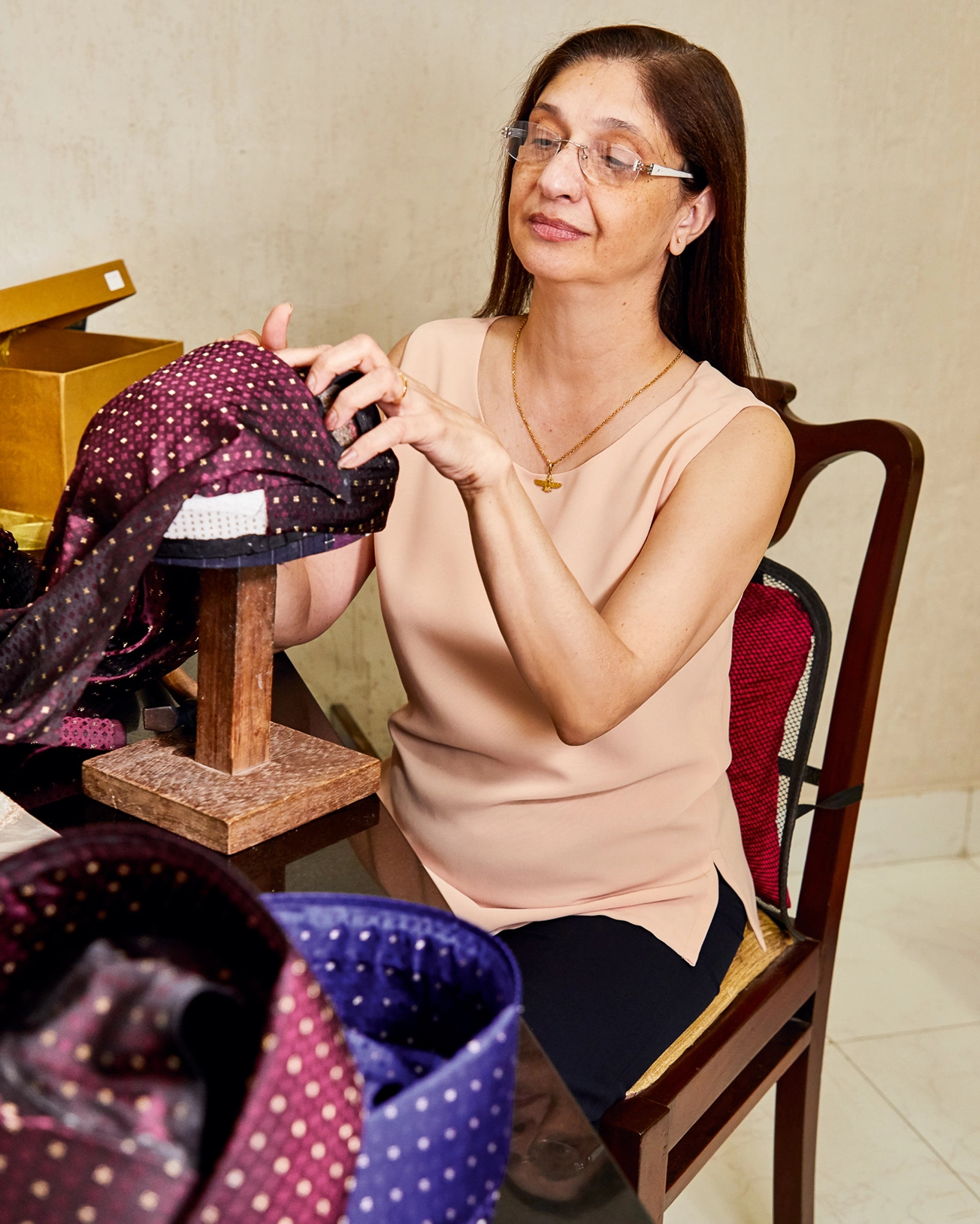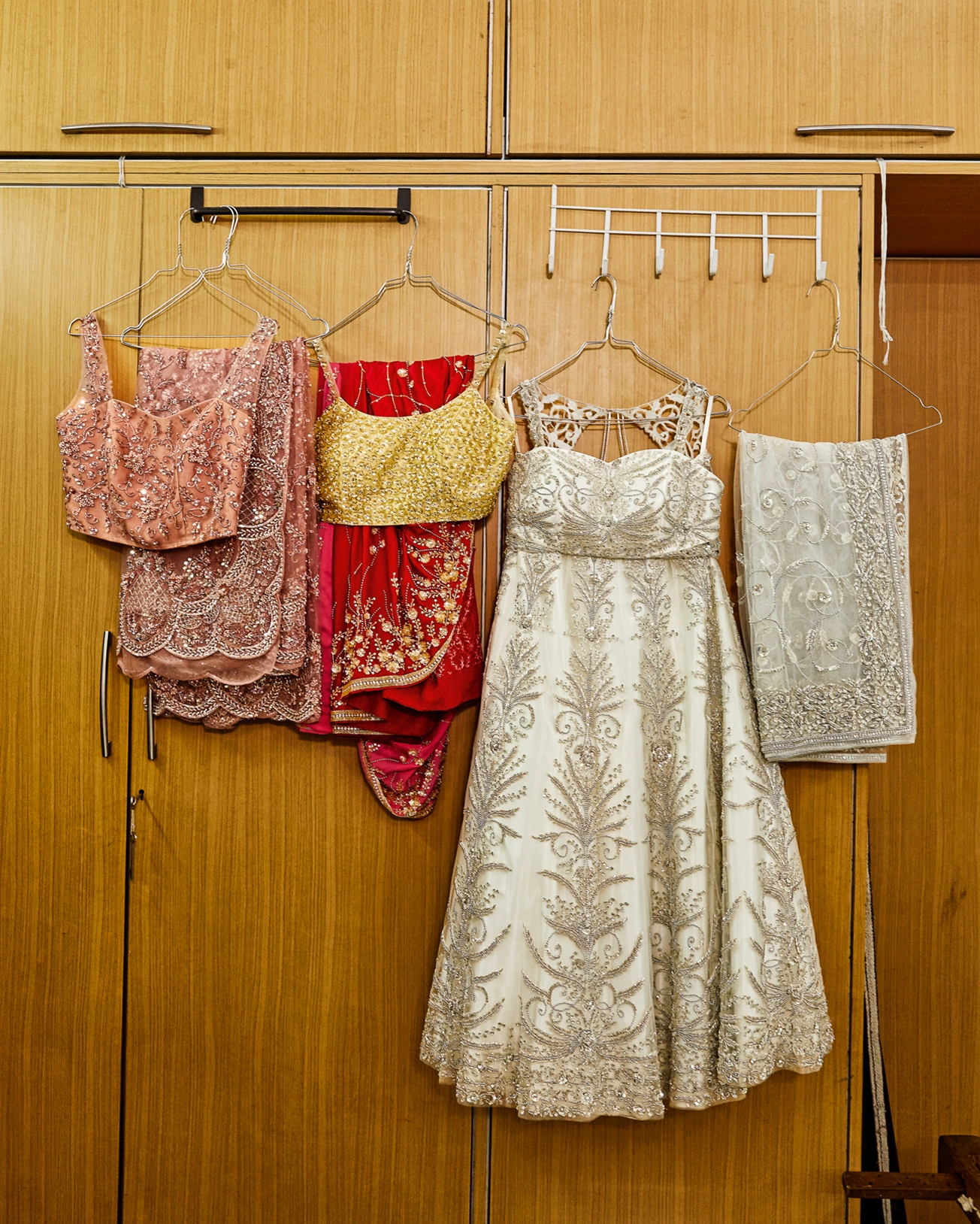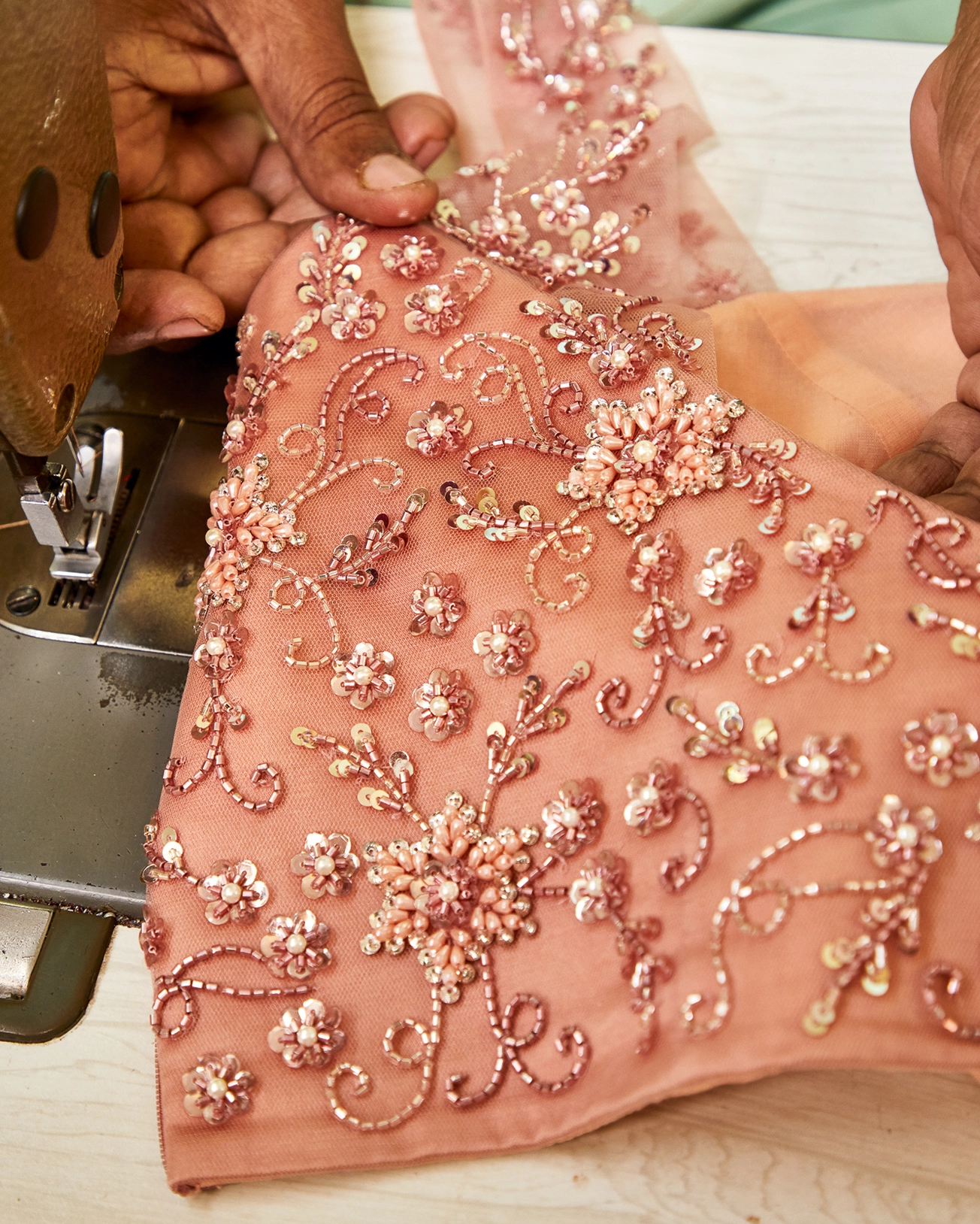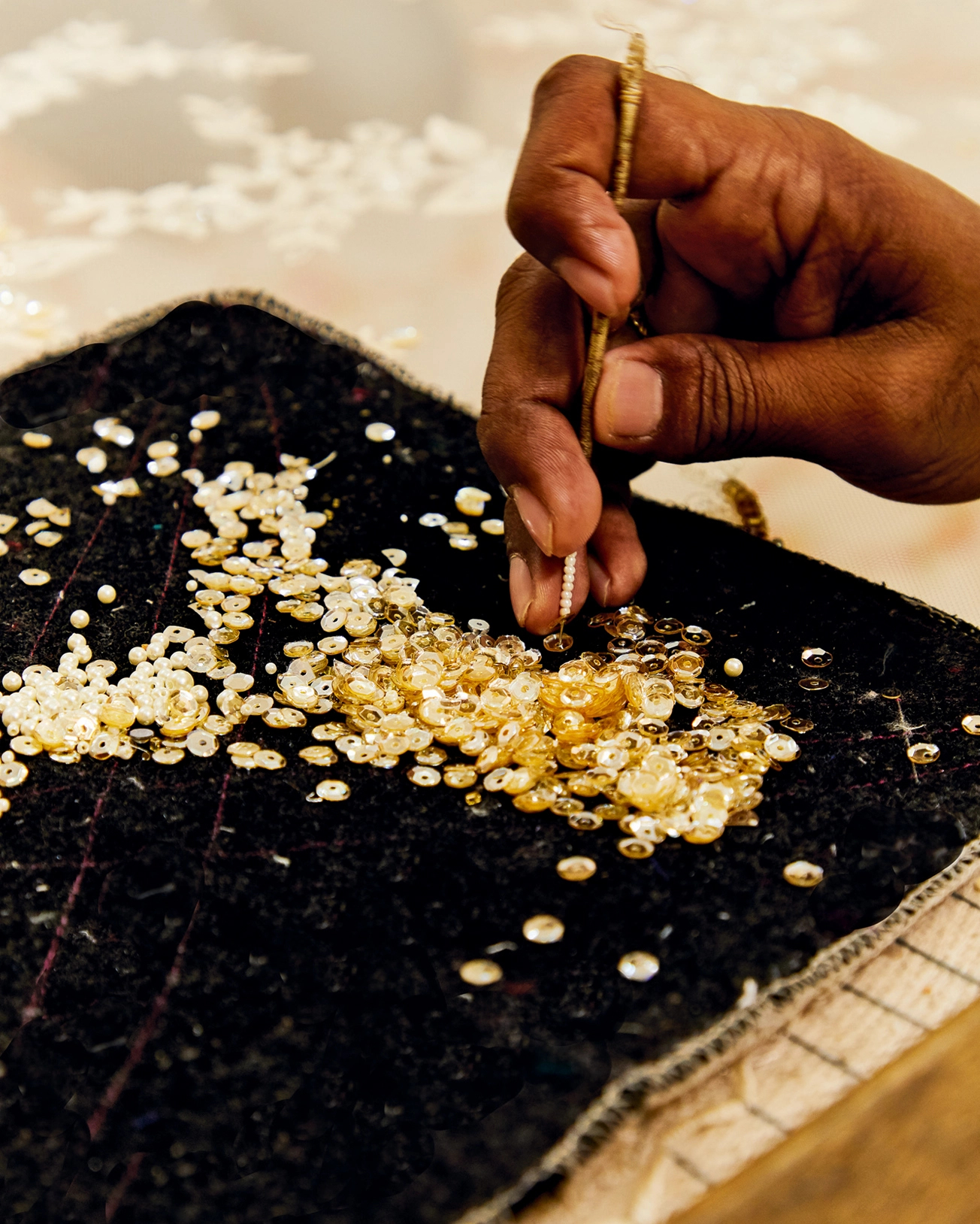Made To Order: Gulshan Kolah
Custom-made garments, whether couture or everyday outfits, are a significant part of our dressmaking heritage. Verve presents four Mumbai-based tailors and boutiques that specialise in the art of bespoke clothing


When I first visit her house I am surprised by the scale of her enterprise. I had assumed that since she works out of her living space, she would have a small set-up. Gulshan Kolah invites me into a long, rectangular room that has three sewing machines, an approximately three-foot-long hollow charpoy with a half-embroidered white fabric stretched over it, and a cutting table along the window. “For the past 15 years, I have had this team of tailors working for me,” she informs us.
Kolah is a well-known dressmaker in the Parsi community and the go-to person for bridal saris. She creates them in a variety of fabrics — chiffon, georgette, lace — along with the blouses, petticoats and the sudreh (a religious undergarment) as well as paghris for the groom. The paghri is the headgear worn by Zoroastrian men at the time of their wedding and other social events. It looks like a pillbox hat with no brim and fabric draped over the crown. “I learnt the art of paghri-making for my own wedding. My husband wanted one since he didn’t want to wear a pheta, which resembles a bowler hat. This was in 1983, and we had planned to get married the next year. I learned how to make the paghri from the last of the paghri-makers who was almost 90 years old. He was known as Nariman Paghri Wala and was about to shut shop at that time. He was too old to teach, but I requested him to let me observe and learn how to make a paghri. I used to go there when he was working and eventually, with a lot of practice, I made the first one for my husband. Then my friends asked me about it at the wedding and that’s when I started my business of making paghris,” recalls 60-year-old Kolah.
Kolah would make outfits for her family and friends when she was a teenager. Later, she started making the paghri and then moved on to embroidered saris for weddings and social gatherings. Since weddings in India are seasonal, the number of orders varies over the year. Kolah plans her time efficiently — during the wedding season they work on custom orders and during the off-season, she creates saris for her in-house collection. She keeps them ready in case a client is looking for something on an urgent basis.


Today, the most exciting part of her job is meeting the bride. “We show her our line of ready-made bridal saris first. Sometimes she chooses from the collection and then we make a petticoat, a blouse and a sudreh to match. Since this undergarment is visible, we make a specific one for each sari. This is the easy part. Often people come with an idea and then we make three to four swatches. Once the embroidery design is finalised, we choose the fabric and the blouse design. We also have to make sure that the design is not too skimpy as the bride will be wearing it in a religious place. This process takes a minimum of three months because we do around two to three trials. If it’s something intricate then it takes longer. Sometimes we’ll make a small envelope clutch to match the sari.”
The second time that I go over, I see her workshop in action. Four karigars are sitting on four sides of the charpoy and patiently embroidering sequins onto the white fabric. A tailor on the sewing machine is stitching a white beaded blouse and another is working on a dusty pink one. The beads are aligned perfectly on the bust seams and the blouse has a soft inner lining. The pink blouse has tone-on-tone embroidered flowers and sheer sleeves. Kolah also pulls out a white lehnga (which she had designed for her daughter) and two saris, one salmon pink and the other, mint green. “Clients come to me not only for wedding wear but other events too such as Navjotes, anniversaries and birthdays. The Navjote ceremony is a ritual through which an individual is inducted into the Zoroastrian religion. We make pretty dresses for young girls for this.”
Parsi gara embroidery is one of the finest and Kolah rarely takes it on. “It works out to be very expensive and there are not a lot of karigars who can do that kind of stitch. We undertake it only if the client is ready to give us time and willing to spend whatever it costs. We have clients who ask us to make a kurta or a blouse and we take around six months to create the piece. We have only one or two karigars who can do that,” she says, with regret. Kolah showed us one of the original gara embroidered saris that she has in her collection. It is beautiful; black with white floral embroidery around the edge. “If you look at the work closely, the threads here are so closely stitched together that you can’t tell the difference between an authentic gara and an imitation done on machine. There are so many replicas available in the market that the craft has lost its value. Sadly, however, everything is not genuine gara work,” explains Kolah. She also shows us a cherry red pre-stitched sari — the pleats in the front and on the shoulder are sewn together to make draping it easier. “A pre-stitched sari is what a bride wants these days. She doesn’t want to deal with the fuss of adjusting the drape every few seconds,” concludes Kolah. She might not refer to herself as a business woman, but her attention to detail definitely makes her an informed dressmaker.